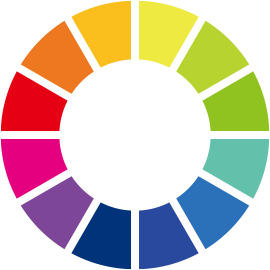ロロピアーナの常識覆す初の「フジワラヒロシ」名義のコレクション、その全貌を聞く
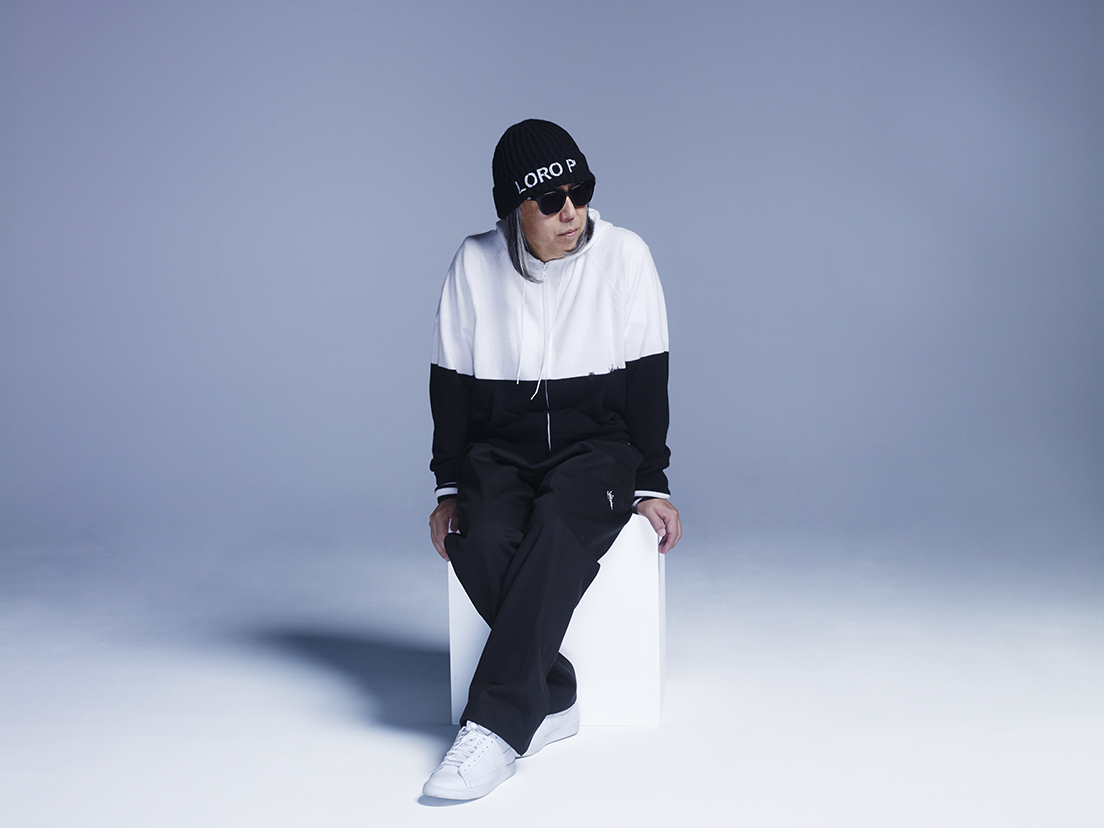
世界最高品質の原材料から作られるLoro Piana(ロロ・ピアーナ)のニット。そのクオリティーは世界各国のセレブリティやエグゼクティブを魅了している。そんなロロ・ピアーナが初のグローバルコラボレーションとして、フラグメントを主宰する藤原ヒロシとのコレクションを発表。ジェンダーレスに展開されるカプセルコレクションには、藤原の根底にあるパンク要素を落とし込み、まさに”正統派”の常識を覆すクリエーションが散りばめられている。また、サンダーマークを使用しない、初の「ヒロシフジワラ」名義のコレクションになるという。その制作背景を藤原ヒロシに聞いた。
藤原ヒロシと巡るLoro Piana featuring Hiroshi Fujiwara
– ロロ・ピアーナのイメージは?
僕はニットしか買ったことがないんですけど、グレーのニットとか5、6枚は持ってます。知り合いから「ニットがいいよ」と勧められて、カシミアが有名なのはもちろん知っていたけれど、実はコットンニットも良くって。なかなか見つからなかった厚めのコットンニットが定番で置いてあって、六本木(けやき坂通り)の路面店によく行っていました。Loroのコットンニットは厚めでざっくりした感じでいいですよ。
– ロロ・ピアーナにとっては初のコラボレーションだそうです。いつ頃から始動したんでしょうか?
話をいただいたのはちょうど1年前ほどかな。最初はニットをメインでという話だったのでニット全般でデザインする予定だったんですけど、靴まであるよね。予定外でした(笑)。靴はLoroが持っているべースのシュースタイルがあってそこから変形させていったんだけど、イタリアのブランドなのでソールやトゥのシェイプがすごくイタリアンな印象。僕らが履くような先が丸くてぽってりとしたものにしています。
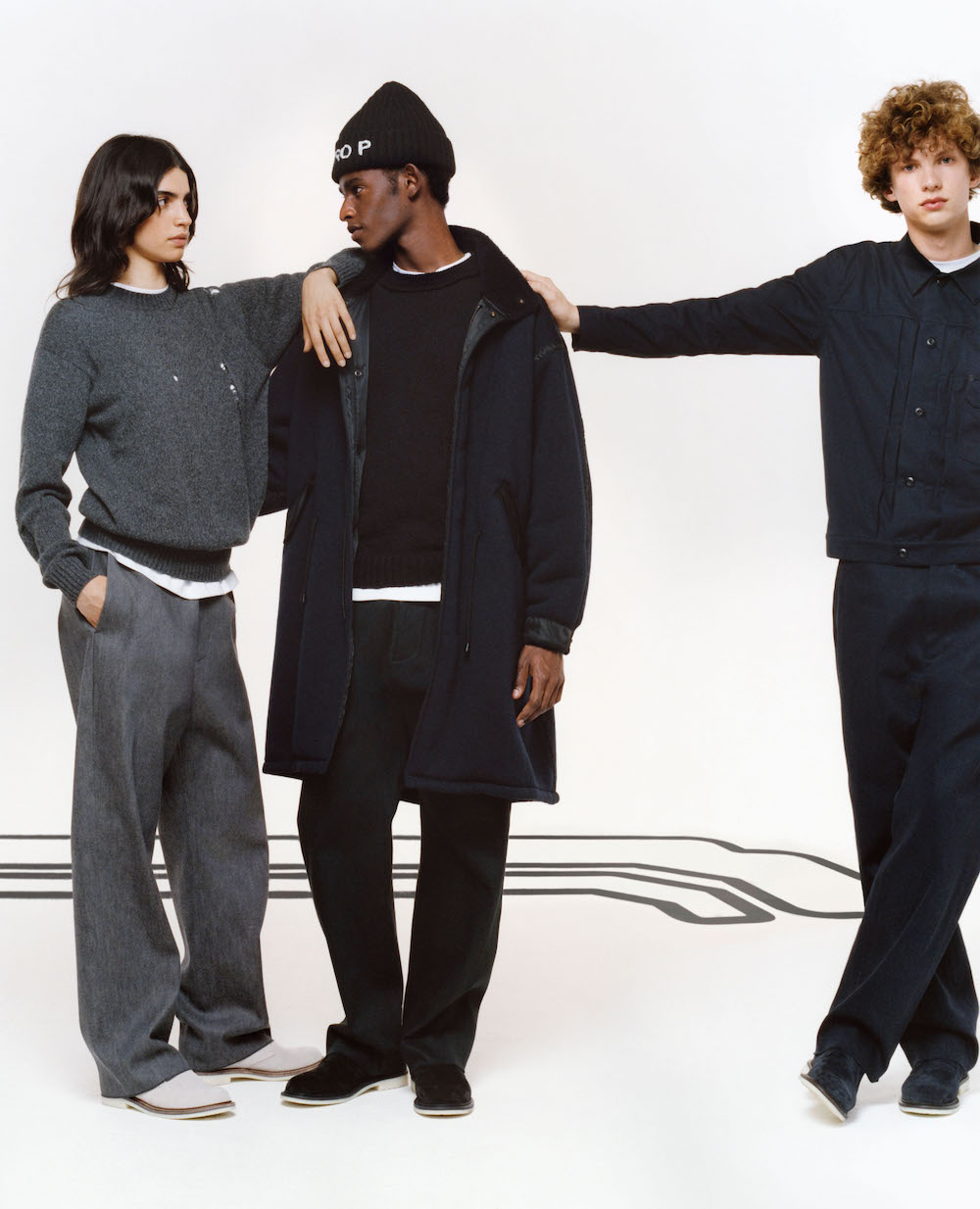
– アイコニックなのは穴を開けたニットですよね。ロロ・ピアーナのニットに穴を開けること自体がパンクですね。
最初に僕も何をやれるのか探り探り聞いていたんだけど、半ば冗談のつもりで「穴を開けたりできないですよね?」と聞いたら「大丈夫かもしれません」と答えてくれて、そこからとんとん拍子に話が進んだんです。きっと、穴の開いたセーターはいくらでもあるけれど、このタイミングでLoroで作らせてもらえたことに僕は意味があると思っています。
– 顔がドアップのビキューナのプリントTシャツもロロ・ピアーナの方々からしたら驚かれたんじゃないでしょうか?
確かに、そうかもしれないですね。プリントは写真集からピックアップしたものです。ビキューナって希少な動物なんですよ。絶滅危惧種に指定されていて、Loroが(保護区を作って)保護しているそうです。ビキューナを使用したニットは200万、コートは700万円ほどする。ニットは高くて使えないので、写真だけ使わせてもらいました(笑)。
– 柄物のイメージがあまりないですが、チェーンのシリーズは何が着想源ですか?
ビートルズが来日した際に着用したJALの半被です。「いつか使いたい」と思っていたモチーフで、決してビートルズやJALが特段好きなわけではなく、単に写真のインパクトがすごく良かった。忘れられず、レプリカをオークションで手に入れました。でも和柄なので、なかなか使えないでいたんです。でも今回の話をもらって、イタリアという国とこの柄はうまくマッチするんじゃないかと思ったんです。また、プリントではなくニットであればイタリアっぽいチェーンとしてうまく落とし込めるんじゃないかって。
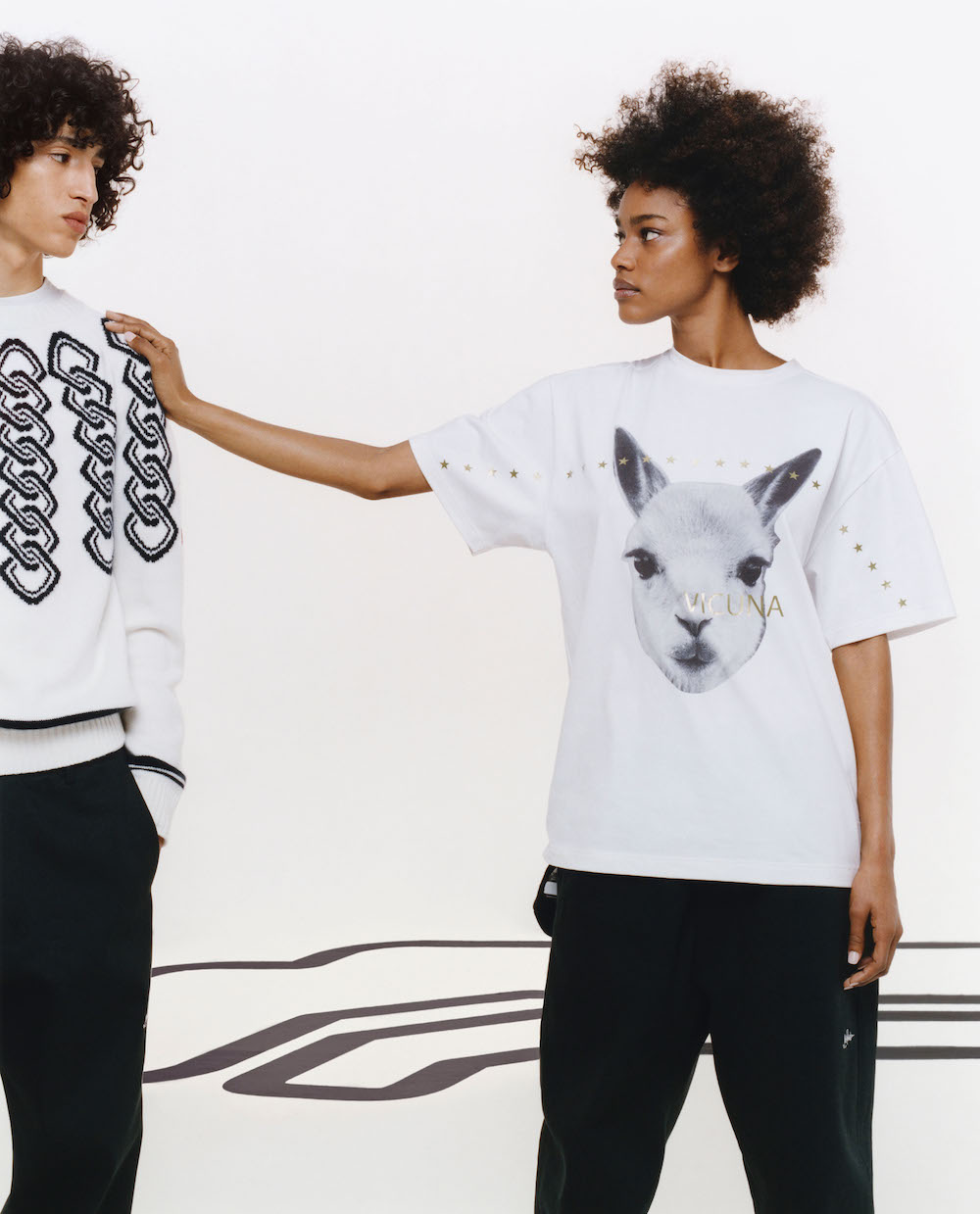
– uniform experimentで定番として販売されているリバーシブルジャケットが登場していますね。
そう。毎年販売しているリバーシブルジャケットの最高級版です。他のアイテムはほぼイタリア製ですが、これだけは日本製。生地はLoroのものを使わせてもらいました。海外ブランドはワールドワイドに販路を持っているけれど、ドメスティックブランドのクリエーションは国内で留まってしまうことが多いので、海外に住むそれが好きな人の目には止まらない。uniform experimentがやってることをLoroの味付けで海外の人にも見てもらいたいと思ったんです。
「NOがなかった」制作過程、サンダーマークを使わない理由
– 制作のプロセスは?
日本でできるものがあれば、日本で作りましょうということだったのでとてもやりやすかったです。送られてきた素材を使って、「これメーターいくらするんでしょうね?」と仲間と話ながらサンプルを全て日本で製作しました。満足したものを送り返したら、イタリアのチームから「これ、生地が全部裏返しですけど大丈夫?」と連絡をもらったんです。向こうの常識としては裏側だったんだと、そこで初めて気づいた。でも、そのままでいいですと伝えたら、そのまま商品化されることになったので僕としてはよかったですね。裏縫いの物が多いのもそれが理由です。
– 本来であれば表で使って欲しいという要望があってもおかしくないですよね。
そうですね。でも、例えばシェイプも高級ブランドは高級ブランドらしいシェイプがあって、あるブランドは、初めから決まっていることもあるし、向こうのシェイプに当てて、出したデザインを変えるブランドもある。でも、Loroでは「NO」ということはあまりなくて。生地の使い方だけではなく、シェイプや細かなディテールまで僕がつくりたいものを再現してくれました。
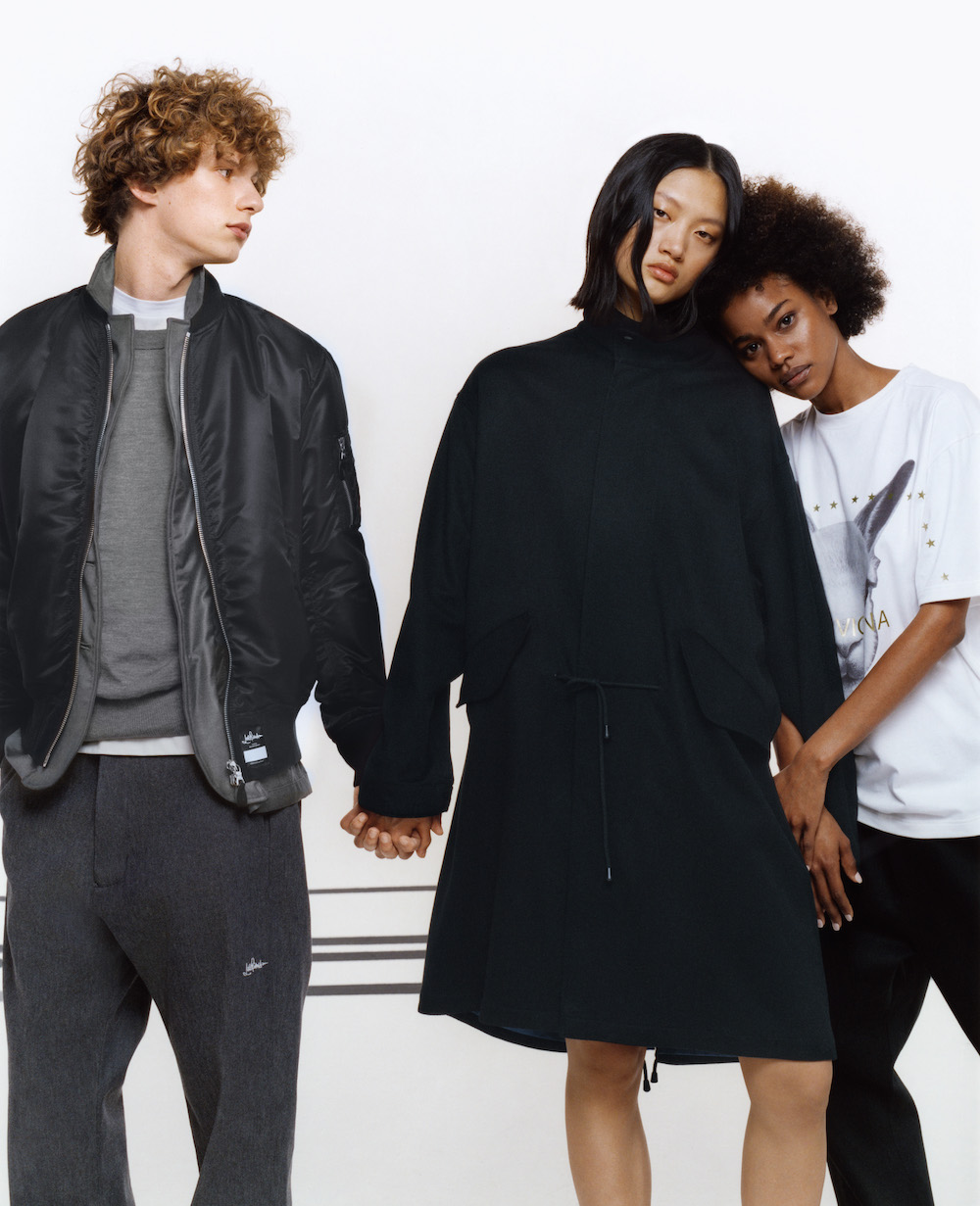
-カプセルコレクションのロゴも変えられているんですね。
そうですね。オリジナルのロゴを変えてもいいのかと聞くと、それもOKだった。何でも自由にやらせてくれるんだと(笑)。オリジナルのロゴはきれいな筆記体なのでそことは対局にある字体がいいなと。カットアップはまた違うなと思い、グラフィティぽいものを内田(洋一朗)くんにいくつか描いてもらって選びました。
– その代わりサンダーマークが使われていません。今回はヒロシフジワラ名義の初のコレクションとなるんですね。
(ヒロシフジワラ名義は)先方からのオファーでした。他ブランドともコラボレーションをしているので、向こうが名前だったら受けてくれるとおもったのかもしれない。商標の関係もあり、最近だとモンクレールも”FRGMT”と記載してたりもするので、人に言われるまで気がつかなかったです。
-ヒロシフジワラとフラグメントのオファーで何か変わりますか?
僕は変わらないです。自分が作りたいものが作れるのであれば、フラグメントであろうが、ヒロシフジワラであろうが、どちらもなくてもいい。ただロゴを求められることが増える中、今回は特に「使って」とも言われなかったから、デザインだけで作ることができて僕的には嬉しかったですね。これまでグラフィックだけではなく、無地のものも作ってきたので、ロゴに頼らずできることは単純に嬉しい。ロゴや名前よりも、ものとして認めてもらえるかどうかが大事で、誰かがたまたま好きだと思って買ったら、僕がデザインしたものだったという方が嬉しいですよね。
-コレクションの発売は発表と同時のタイミングです。
プレス向けの発表の翌日に発売するアップル方式です。今回はコロナでスケジュールが遅れたこともあって、結果的にこの形式になったんですが、今一番良い形なんじゃないかな。ランウェイで見せて、プロモーションを仕掛けて、売るまでのタイムラグがないことはクリエイター側にとってはいいですよね。発売直前まで明かさない方が作り手側もパッションを保てる。通例では自分で着るサンプルが届いて公開していい時期まで半年間はあるし、その頃には次のコレクションに気持ちが移っている。今回はサンプルが届いてすぐにインスタでアップしたけれど、そのくらいのテンションで気持ちを届けたいですよね。
– 最後にヒロシさんはどのアイテムが気に入っていますか?
改めてニットはよかったですね。届いてすぐに着たいと思ったけれど、まだ暑いから。あと、Loroクオリティのジージャンもシャーリングを入れていたり、よく見ると納得してもらえるだろうこだわりはたくさん入っていると思います。
▶︎Loro Piana featuring Hiroshi Fujiwara 10 items pick
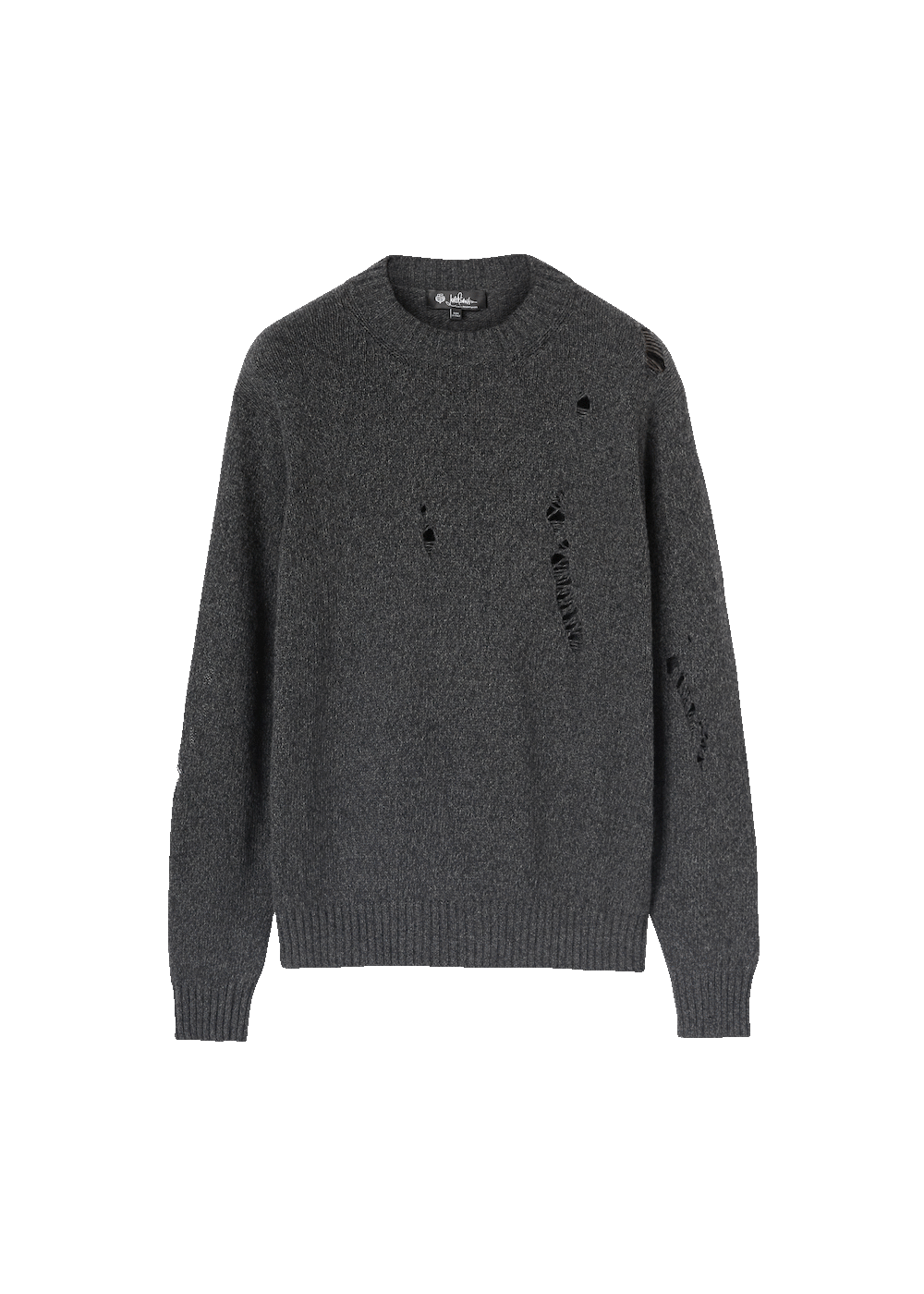
■Loro Piana featuring Hiroshi Fujiwara
- Keywords:


